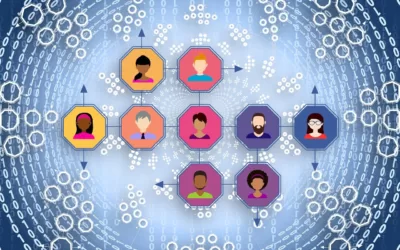Introduction
In the digital age, social media platforms have transformed the way we communicate, share information, and connect with others. Beyond being tools for personal connection and entertainment, social media has proven to be a powerful tool for educational purposes. This blog will delve into the best ways to utilize social media for educational advancement, exploring how it can enhance learning experiences and open up new opportunities for both students and educators.
- Access to a Vast Repository of Information
The internet is a treasure trove of information, and social media platforms serve as gateways to this wealth of knowledge. Platforms like Twitter, Facebook, and Instagram allow educators and students to follow accounts and pages related to their field of interest. By doing so, they gain access to a constant stream of educational content, from articles and research papers to videos and infographics. This makes it easier than ever to stay updated on the latest developments in any academic area.
- Online Communities and Support
Social media is not just a place to consume information; it’s a platform for building communities. Students and educators can connect with like-minded individuals and experts in their field through groups, forums, and discussions. Online communities provide a space for sharing ideas, asking questions, and seeking support, fostering a sense of belonging and collaboration.
- Collaborative Learning Opportunities
One of the most significant advantages of social media is its ability to facilitate collaborative learning. Platforms like Slack, WhatsApp, and Discord are excellent for group discussions and project collaborations. Students can easily create study groups, share resources, and work together on assignments, even when they are physically distant.
- Multimedia Learning Resources
Social media is rich in multimedia content, making it an ideal platform for visual and auditory learners. Educators can create engaging videos, podcasts, and webinars to supplement traditional teaching methods. These resources can be shared across platforms, allowing students to learn at their own pace and revisit materials as needed.
- Promoting Critical Thinking and Digital Literacy
Navigating social media requires digital literacy, which is an essential skill in today’s world. When used for educational purposes, social media can teach students how to critically evaluate information sources, identify bias, and distinguish between credible and unreliable content. These skills are not only valuable in academia but also in everyday life.
- Global Networking and Cultural Exposure
Social media platforms break down geographical barriers, enabling students and educators to connect with people from around the world. This global networking can be a valuable asset for research collaborations, cultural exchange, and gaining diverse perspectives on various subjects.
- Engaging with Industry Professionals
Many professionals and experts in various fields maintain a presence on social media. By following and engaging with these individuals, students can gain insights into real-world applications of their studies and build valuable connections for future career opportunities.
- Personalized Learning
Social media algorithms analyze users’ interests and behaviors to provide personalized content recommendations. This feature can be harnessed for educational purposes by tailoring content to students’ individual learning preferences and needs. Educators can curate content or suggest relevant accounts for their students to follow, enhancing the learning experience.
- Encouraging Self-Directed Learning
Social media empowers students to take control of their education and become self-directed learners. Instead of relying solely on traditional classroom instruction, they can use social media to explore topics of personal interest, seek out resources, and pursue independent research.
- Showcasing Achievements and Building a Portfolio
Platforms like LinkedIn and Twitter are excellent for showcasing academic achievements, research publications, and projects. Students can build an online portfolio that demonstrates their skills and knowledge to potential employers and collaborators.
Conclusion
The integration of social media into education represents a significant shift in the way we learn and teach. By harnessing the power of these platforms, educators and students can access a wealth of information, build communities, collaborate globally, and develop essential skills for the digital age. To make the best use of social media for educational purposes, it is crucial to approach it with intention, critical thinking, and a commitment to fostering a positive and enriching online learning environment. As social media continues to evolve, its potential as a tool for educational advancement is limitless, and those who embrace it will undoubtedly reap the benefits in the pursuit of knowledge and personal growth.





I’m really inspired with your writing talents
as neatly as with the layout in your blog. Is that this a paid
subject or did you modify it yourself? Either way keep up the excellent high quality writing, it is uncommon to see a
nice weblog like this one today. Lemlist!
Hi everyone! 🙂
I wanted to share an awesome find – an online store called SmartBlip (https://smartblip.com) that’s perfect for smart tech lovers! They have a huge range of gadgets, like smart lights, home automation devices, and even cool wearable tech. I recently got some smart bulbs from them, and they’ve totally transformed my space! ? Their prices are great, and the shipping was super fast.
If you’re looking for innovative tech to upgrade your life, check out SmartBlip at https://smartblip.com. I’d love to hear what you think about their products – anyone else shopped there before?
Happy shopping!
Can you be more specific about the content of your article? After reading it, I still have some doubts. Hope you can help me.
The 10 Scariest Things About Car Locksmiths Luton Car locksmiths luton